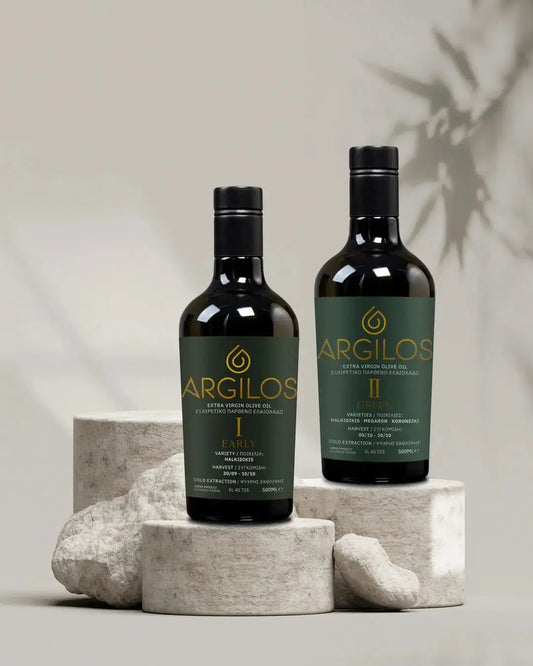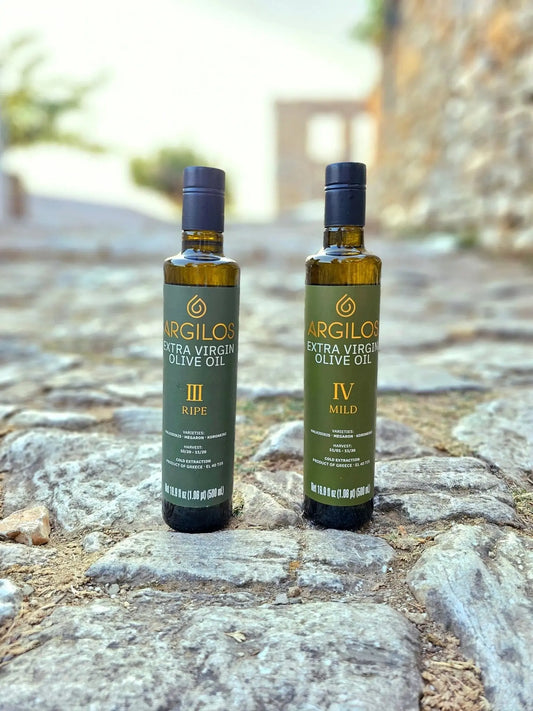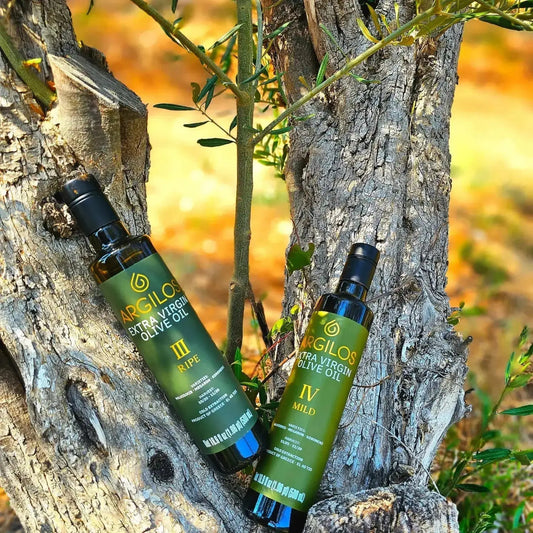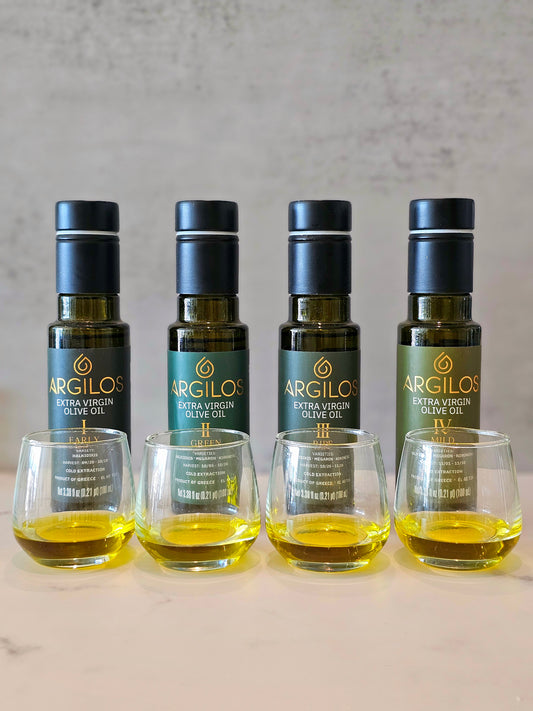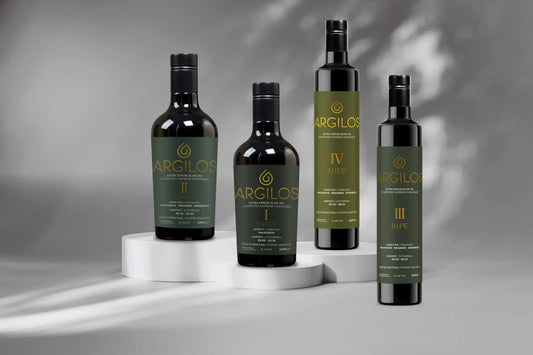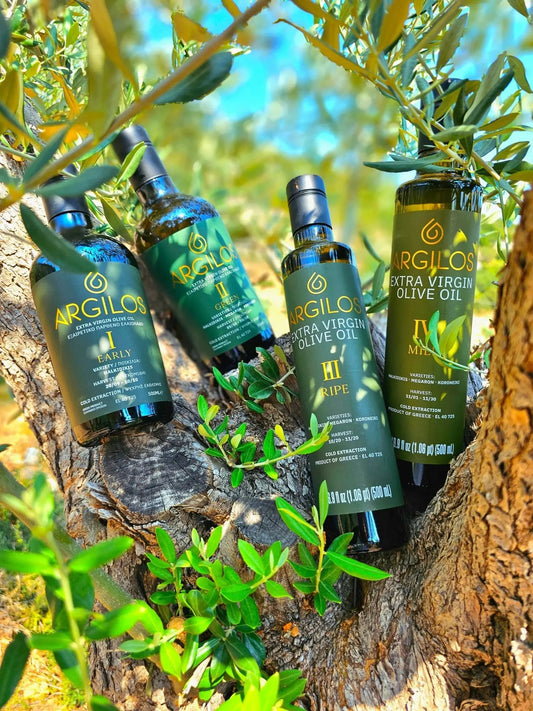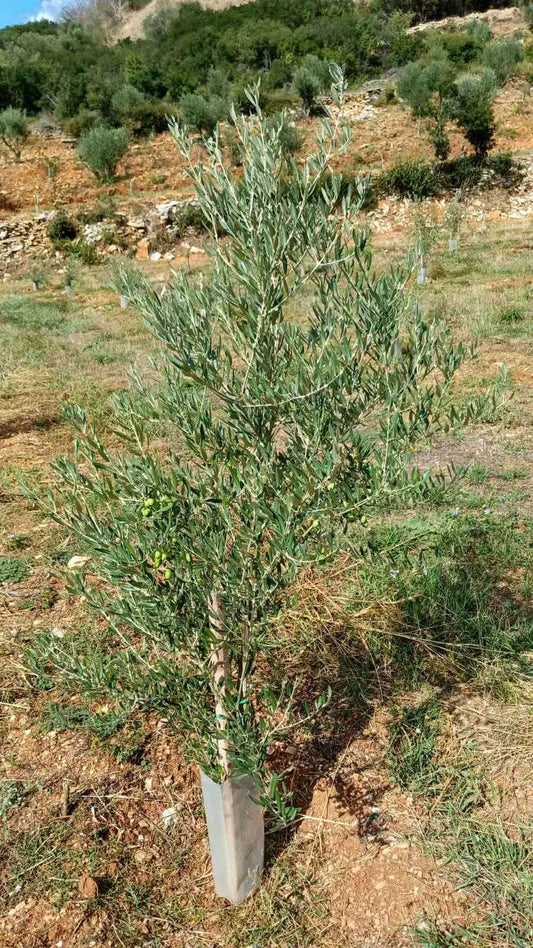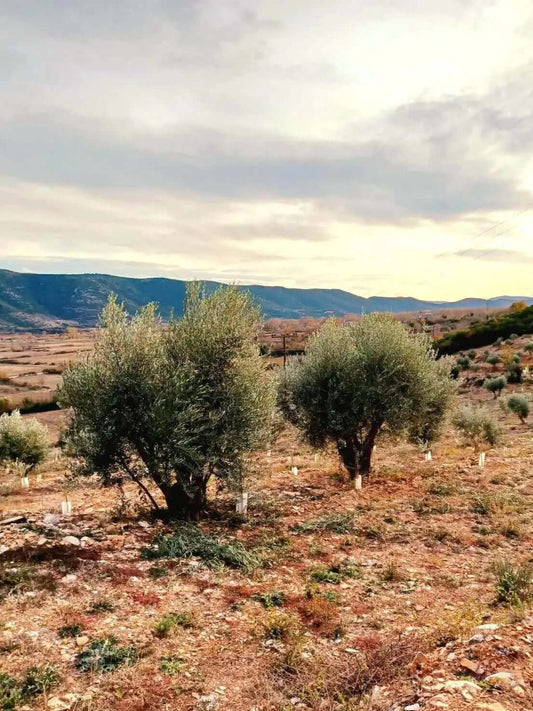How To Tell If Olive Oil Is Bad?
Share
Olive oil is often called liquid gold — a symbol of health, purity, and Mediterranean living. But even this golden elixir has a lifespan. How to tell if olive oil is bad? When olive oil goes “bad,” it means the oil has oxidized or turned rancid, losing its aroma, flavor, and beneficial properties. Chemically, oxidation and exposure to heat or light cause its fatty acids to break down, altering both its taste and nutritional value.
Even premium extra virgin olive oil (EVOO) is not immune to time. As its natural antioxidants fade, its vibrancy diminishes. That’s why freshness is the clearest sign of authenticity. True Greek olive oil, like the Early Harvest EVOO, stays fresher longer, thanks to early harvest pressing and naturally high polyphenol levels that protect it from premature aging.
What Causes Olive Oil To Go Bad?
Olive oil begins to deteriorate the moment it comes into contact with oxygen. This process, known as oxidation, triggers a chain reaction that alters its chemical structure and flavor profile. A second reaction, hydrolysis, occurs when moisture or enzymes interact with the oil, breaking down its triglycerides into free fatty acids — compounds that contribute to rancidity and an unpleasant smell.
Environmental conditions accelerate these changes. Light exposure damages the delicate compounds that give olive oil its signature color and aroma, while heat quickens chemical decay. Even air trapped in half-empty bottles can spoil oil faster than expected. Improper storage, poor-quality olives, or delays between harvest and pressing also lead to early spoilage.
Typically, well-produced EVOO lasts about 18–24 months from bottling if stored properly. Once opened, it should ideally be consumed within six to twelve months to ensure the taste and health benefits remain intact. Fresh olive oil is a living product — treat it like an acceptable ingredient, not a pantry afterthought.

How To Tell If Olive Oil Is Bad? - 5 Clear Signs
A fresh olive oil delights the senses — aromatic, grassy, and slightly peppery. When it goes bad, every cue changes. Recognizing these differences helps you avoid flat, bitter, or even unhealthy oil.
-
Smell: Fresh olive oil has a fruity aroma, similar to green apples, herbs, or freshly cut grass. Rancid oil smells musty, waxy, or similar to crayons and putty — signs of oxidation.
-
Taste: A good olive oil has balance — fruitiness, bitterness, and a light burn at the throat. Spoiled oil tastes greasy, metallic, or overly bitter when it lacks freshness.
-
Color: Authentic EVOO glows golden-green, depending on the olive variety. As it ages, it loses that luster, appearing dull yellow or brownish.
-
Texture: Fresh oil feels smooth and silky. Bad oil thickens slightly, leaving a sticky residue on the tongue or bottle neck.
-
Packaging Clues: If your bottle cap leaks, or if it’s stored in clear glass where light passes through, the oil may degrade faster than expected.
Professional sensory panels and labs confirm that smell and taste remain the most reliable freshness indicators. When in doubt, trust your senses — olive oil should always smell alive.

How Long Does Olive Oil Last Before It Expires?
Olive oil doesn’t have a strict expiration date, but it does have a “best before” window that marks the period when it retains optimal flavor and nutrition. After that date, it gradually loses its vitality. The table below shows typical shelf lives for different olive oil types.
|
Type |
Shelf Life (Unopened) |
Shelf Life (Opened) |
Storage Tips |
|
Extra Virgin Olive Oil |
18–24 months |
6–12 months |
Keep below 20°C in dark glass or tin containers |
|
Refined Olive Oil |
24–36 months |
12–18 months |
Store airtight, away from light and heat |
Remember, the “best before” label is not an expiration warning — it simply indicates when the oil will taste its best. While slightly older oil won’t make you sick, it will lose the fresh aroma and antioxidants that make EVOO such a prized ingredient. To enjoy olive oil as it was meant to be — fragrant, flavorful, and full of vitality — use it well within its prime.
Can You Still Use Olive Oil After It’s Gone Bad?
Rancid olive oil won’t harm you physically, but it also won’t do your body or your cooking any good. Once its antioxidants and healthy fatty acids have broken down, it no longer carries the heart-protective or anti-inflammatory benefits of fresh oil. The loss of polyphenols — those natural compounds that give Greek EVOO its peppery taste — means both nutrition and flavor have faded.
Old olive oil can be repurposed for household uses like polishing furniture or conditioning wooden utensils, but it should never be used for eating. At Nostos Goods, olive oil is more than a kitchen staple; it’s a symbol of wellness. Using it fresh ensures your meals retain not just flavor, but the essence of the Mediterranean lifestyle.
How To Store Olive Oil Properly To Keep It Fresh
Caring for olive oil is simple once you understand its sensitivities. Heat, light, and air are its greatest enemies. The goal is to slow down oxidation and preserve the oil’s natural antioxidants for as long as possible.
Store olive oil in a cool, dark place, ideally between 14°C and 18°C, away from the stove or windows. Always choose dark glass bottles or stainless-steel tins, as they block damaging light. After each use, seal the bottle tightly to prevent air from creeping in. Avoid plastic containers — they can leach chemicals and accelerate spoilage.
Refrigeration is not usually necessary unless your kitchen is very warm. Cold temperatures can make the oil appear cloudy, but it will return to normal once it reaches room temperature. Greek producers take these details seriously, bottling their oils under optimal conditions to ensure every pour remains as vibrant as the day it was pressed.

Common Myths About Olive Oil Freshness
|
Myth |
Fact |
|
Color shows quality. |
False. Olive oil color depends on the olive variety and harvest time, not its freshness. |
|
All olive oils last the same. |
False. Extra virgin oils with higher polyphenols, like Greek Koroneiki oils, have greater stability. |
|
Refrigeration preserves oil indefinitely. |
Partly true. It slows oxidation but affects aroma and consistency. |
|
A mild flavor means better quality. |
False. Fresh EVOO should have lively, peppery, and slightly bitter notes — signs of healthy antioxidants. |
Understanding these myths helps consumers appreciate olive oil for what it truly is: a living, evolving product shaped by nature, craftsmanship, and time.
Expert Tip – Taste Like a Pro: The Olive Oil Freshness Test
Tasting olive oil properly is both an art and a sensory adventure. Professionals trained under International Olive Council standards follow a simple three-step process to evaluate freshness, and you can do the same at home.
Start with smell — pour a small amount into a cup and gently warm it with your hands. Swirl and inhale deeply. Fresh olive oil should smell green and vibrant, like freshly cut grass or herbs. Next, sip a small amount and let it coat your tongue. Pay attention to the fruitiness, the slight bitterness, and the peppery kick that lingers at the back of your throat. Finally, observe the feel — true EVOO feels silky yet clean, never heavy or greasy.
When these three sensations — fruity aroma, bitter edge, and peppery finish — appear together, you’re tasting absolute freshness. For a perfect example of this balance, try the Argilos III Ripe EVOO, which showcases the smooth yet vibrant profile of authentic Greek olive oil.
Final Words
Every bottle of Nostos Goods olive oil captures the integrity of Greek craftsmanship. The olives are harvested early at peak ripeness, cold-pressed within hours, and sealed immediately in dark glass bottles to protect against light and oxygen.
By maintaining a small-batch approach, Nostos preserves the oil’s natural antioxidants and authentic aroma. This commitment to freshness isn’t just about taste — it’s about trust, health, and honoring the rich tradition of Greek olive cultivation.
FAQs About How To Tell If Olive Oil Is Bad?
How do I know if olive oil is expired?
Check the “best before” date and use your senses. If the oil smells musty or waxy instead of grassy and fruity, it’s past its prime.
Can I cook with old olive oil?
While not dangerous, old oil lacks flavor and health benefits. Use it for non-food purposes like wood conditioning.
Does refrigeration ruin olive oil?
No, refrigeration only changes the texture temporarily. Once back at room temperature, the oil regains its clarity and fluidity.
What is the ideal storage temperature?
Keep olive oil between 14°C and 18°C, away from light, heat, and air for the longest possible freshness.
Why does Greek olive oil last longer?
Greek EVOO, such as that from Nostos Goods, is rich in natural polyphenols and bottled fresh, making it more resistant to oxidation and longer-lasting than most commercial oils.

